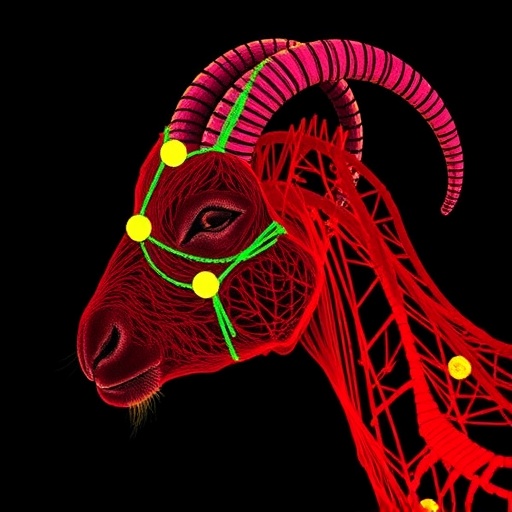Pulmonary arterial hypertension (PAH) is a complex and progressive disease characterized by high blood pressure in the pulmonary arteries, which can lead to serious complications including heart failure and reduced quality of life. While PAH can affect individuals of all backgrounds, recent studies indicate that there may be significant differences in disease characteristics, treatment patterns, and outcomes based on race and ethnicity. A groundbreaking study by Melendres-Groves et al. has shed light on these disparities by analyzing real-world data derived from the combined OPUS and OrPHeUS studies, emphasizing the need for tailored approaches to treatment.
The study sampled diverse cohorts, focusing on how racial and ethnic backgrounds influence not only the clinical presentation of PAH but also the treatment regimens prescribed. Researchers utilized data from the OPUS and OrPHeUS studies, which, when combined, provide a rich dataset representing a broad spectrum of patients affected by PAH across various demographics. This comprehensive approach enables a more nuanced understanding of the disease, contributing important insights that were previously lacking in the literature.
One of the key findings of the study was that clinical presentation of PAH can vary significantly between different racial and ethnic groups. For instance, certain populations displayed a higher prevalence of specific underlying conditions that contribute to the development of PAH. Additionally, variations in the severity of symptoms at the time of diagnosis were noted, suggesting potential disparities in access to care or disease awareness among different groups. These differences highlight the importance of culturally competent care and the need for clinicians to remain vigilant for signs of PAH in diverse patient populations.
Moreover, the study examined treatment patterns and adherence to prescribed therapies across racial and ethnic lines. Researchers found that treatment decisions were often influenced by factors such as socioeconomic status, cultural perceptions of disease, and healthcare access limitations. For example, some racial groups were found to receive second-line treatments less frequently, which may explain the observed disparities in clinical outcomes. As such, this research underscores the critical role of ensuring equitable access to effective therapies for all PAH patients.
An interesting aspect of the study involved analyzing outcomes related to treatment efficacy. The data indicated that while certain racial and ethnic groups responded well to standard therapies, others experienced less favorable outcomes. This discovery raises important questions about the pharmacogenomics of PAH treatments, suggesting that genetic factors may play a role in how different populations respond to medications. Tailoring treatment options based on genetic profiles could significantly enhance the effectiveness of care provided to PAH patients.
In discussing the broader implications of this research, the study advocates for a more personalized approach in the management of pulmonary arterial hypertension. By recognizing the influence of race and ethnicity on both disease characteristics and treatment outcomes, healthcare providers can develop more effective, individualized patient care plans. This could include considering alternative therapies or adjunctive treatments for groups that historically have worse outcomes.
The findings of Melendres-Groves et al. also call attention to the need for increased education and awareness around PAH, particularly in underserved communities. Community outreach programs tailored to educate both patients and healthcare providers about the signs and symptoms of PAH could lead to earlier diagnosis and intervention, potentially improving survival rates and quality of life for affected individuals.
Another critical takeaway from the study is the need for ongoing research to better understand the biological and social determinants of health that contribute to disparities in PAH. Future studies could focus on longitudinal data collection that tracks the experiences of diverse populations over time, providing valuable insights into the effectiveness of varying treatment approaches. This could ultimately inform public health policy aimed at addressing healthcare inequalities.
As the conversation around health disparities continues to grow, this study contributes vital data to the ongoing discourse surrounding race, ethnicity, and health outcomes in PAH. By shining a light on these disparities, it opens the door for future inquiries and interventions aimed at tailoring PAH care to meet the unique needs of diverse patient populations.
In conclusion, Melendres-Groves et al.’s study stands as an important addition to the body of literature on PAH. It highlights the urgent need for healthcare systems to adapt to the realities of a multicultural society and to ensure that all patients receive equal access to high-quality care. As we advance in our understanding of PAH, let us remain steadfast in our commitment to equity in healthcare, ensuring that innovation and treatment are accessible to all.
In light of these findings, healthcare policymakers and practitioners must take proactive steps to translate this research into practice. Whether it’s through training programs focused on cultural competency or initiatives aimed at mitigating unconscious bias in treatment decisions, the call to action is clear: addressing disparities in PAH care is essential for improving outcomes and fostering a more equitable healthcare landscape.
As the field of pulmonary arterial hypertension continues to evolve, this study serves as a reminder of the multifaceted nature of health disparities. By recognizing and addressing these issues head-on, we can work towards a future in which all patients with PAH have the opportunity to thrive, irrespective of their background.
In the complex landscape of pulmonary arterial hypertension management, this research emerges as a beacon of hope and progress. It instills the importance of inclusivity in clinical research, encouraging a more comprehensive understanding of how this debilitating disease affects varied populations differently. With ongoing efforts to enhance patient education, access to treatment, and tailored therapeutic strategies, we can foster a healthcare environment that champions equity and recognizes the unique experiences of all patients.
As we move forward in this critical field of research and clinical care, the collective work of researchers, healthcare providers, and community advocates will be essential in bridging the gap in PAH outcomes across racial and ethnic lines. Ultimately, the goal is clear: to ensure that pulmonary arterial hypertension can be managed effectively for every patient, regardless of their backgrounds or circumstances.
Subject of Research: Pulmonary Arterial Hypertension and Racial Disparities in Treatment Outcomes
Article Title: Characteristics, Treatment Patterns and Outcomes of Patients with Pulmonary Arterial Hypertension by Race and Ethnicity Using Real-World Data from the Combined OPUS/OrPHeUS Studies
Article References:
Melendres-Groves, L.D., Channick, R.N., Chin, K.M. et al. Characteristics, Treatment Patterns and Outcomes of Patients with Pulmonary Arterial Hypertension by Race and Ethnicity Using Real-World Data from the Combined OPUS/OrPHeUS Studies.
Adv Ther (2025). https://doi.org/10.1007/s12325-025-03403-4
Image Credits: AI Generated
DOI: https://doi.org/10.1007/s12325-025-03403-4
Keywords: Pulmonary arterial hypertension, racial disparities, treatment outcomes, clinical research, healthcare equity
Tags: Clinical presentation of PAH by raceEthnic differences in PAH outcomesHeart failure and PAH complicationsImportance of demographic factors in PAH managementOPUS and OrPHeUS studies analysisPAH research and racial equityProgressive disease outcomes in diverse populationsQuality of life in PAH patientsRacial disparities in pulmonary arterial hypertensionReal-world data on PAH demographicsTailored treatment approaches for PAHTreatment patterns in pulmonary hypertension





